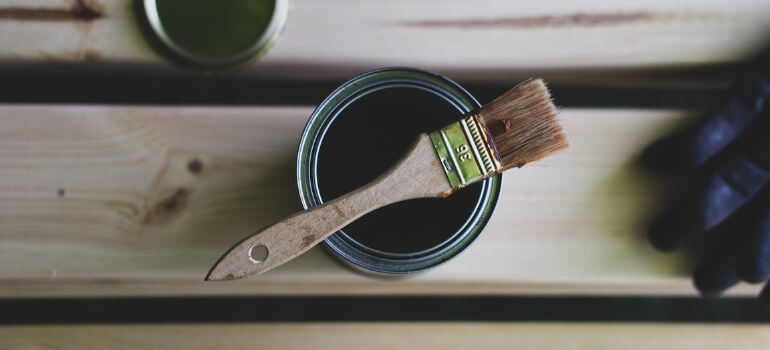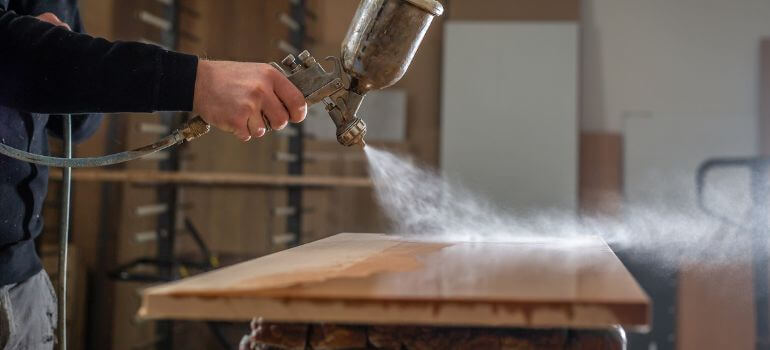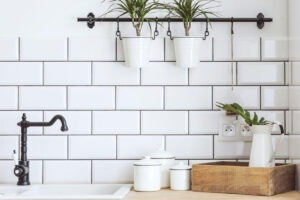Woodworking enthusiasts often find themselves in a dilemma when it comes to choosing the right finish for their projects. Gel Stain and Polyshades are two popular options, each with its unique characteristics and applications. In this article, we’ll delve into the details of these products, comparing their composition, application techniques, appearance, durability, and more.
Introduction to Gel Stain and Polyshades
Wood finishing is a crucial step in any woodworking project, and Gel Stain and Polyshades stand out as go-to choices for many. Gel Stain is renowned for its easy application and deep color penetration, while Polyshades combines stain and polyurethane for a one-step solution. Both have their merits, but which one is the right fit for your project? Let’s find out.
Composition and Characteristics
Gel Stain Components
Gel Stain is a translucent pigment mixed in a thick, gel-like base. This unique composition allows for easy control during application, preventing drips and splatters. The thicker consistency also ensures better adherence to vertical surfaces.
Polyshades Composition
Polyshades, on the other hand, is a blend of traditional wood stain and polyurethane finish. This combination simplifies the finishing process by eliminating the need for separate stain and topcoat applications. It’s a time-saving solution with its own set of advantages.
Application Techniques

How to Apply Gel Stain
Gel Stain is user-friendly, making it an excellent choice for beginners. Application involves using a brush, cloth, or sponge, depending on the desired effect. The gel consistency prevents the stain from spreading too quickly, allowing for precise application and control over the depth of color.
Techniques for Using Polyshades
Polyshades simplifies the application process further. It’s applied similarly to traditional stain, and the one-step formula means fewer coats. However, users need to pay attention to even application to avoid streaks or uneven color distribution.
Pros and Cons of Each Method
Choosing between Gel Stain and Polyshades depends on the project’s complexity and the user’s skill level. While Gel Stain offers greater control, Polyshades excels in efficiency. Consider your comfort level and the project requirements when deciding.
Appearance and Finish
Comparing the appearance of surfaces treated with Gel Stain and Polyshades reveals distinct characteristics. Gel Stain tends to enhance the natural grain of the wood, providing a rich, deep color. Polyshades, on the other hand, often imparts a more consistent color, with a glossy finish thanks to the built-in polyurethane.
Which one provides a better finish? It ultimately depends on the desired outcome. If you’re looking to highlight the wood’s natural beauty, Gel Stain might be the preferred choice. However, if a uniform, glossy finish is your goal, Polyshades could be the answer.
Durability and Longevity
Wood surfaces face constant wear and tear, making durability a crucial factor in choosing a finishing product.
Assessing the Durability of Gel Stain
Gel Stain offers good durability but might require more frequent touch-ups in high-traffic areas. The thicker application can provide added protection, but proper maintenance is key to preserving its longevity.
Longevity of Polyshades Finishes
Polyshades, with its polyurethane blend, is known for creating robust finishes. It forms a protective layer that shields the wood from scratches and environmental factors. This longevity makes it suitable for surfaces that undergo heavy use.
Factors Affecting Both
External factors, such as exposure to sunlight and humidity, play a role in the longevity of both Gel Stain and Polyshades finishes. Understanding these factors helps users make informed decisions about which product best suits their needs.
Suitability for Different Wood Types
Different wood types absorb stains differently, influencing the final appearance. Knowing which product works best with specific woods is crucial for achieving the desired results.
Ideal Wood Types for Gel Stain
Gel Stain is versatile and works well with various wood types, including pine, oak, and maple. Its thicker consistency allows for better control, making it suitable for both porous and dense woods.
Wood Compatibility with Polyshades
Polyshades is compatible with most wood types, but its one-step application might require extra attention on more porous woods. Users should consider the wood species and choose accordingly for optimal results.
Choosing the Right Product for Specific Projects
Consider the type of wood you’re working with and the project’s purpose when deciding between Gel Stain and Polyshades. Each has its strengths, and choosing the right one ensures a professional-looking finish.
Color Options
The range of colors available in Gel Stain and Polyshades opens up exciting possibilities for customization.
Range of Colors in Gel Stain
Gel Stain comes in a variety of colors, from light naturals to deep, rich tones. This flexibility allows woodworkers to achieve the desired hue, enhancing the aesthetic appeal of their projects.
Polyshades’ Color Palette
Polyshades offers a curated palette, merging stain and finish into one application. While the range might not be as extensive as Gel Stain, it provides a selection that caters to popular wood tones, ensuring a harmonious look.
Customization Possibilities
Whether you prefer the extensive color range of Gel Stain or the simplified yet curated options of Polyshades, both products offer customization possibilities. Consider your project’s theme and desired color scheme when making your choice.
Ease of Use for Beginners
The learning curve for applying finishes can vary, especially for beginners. Let’s explore the user-friendliness of Gel Stain and Polyshades.
Beginner-Friendly Aspects of Gel Stain
Gel Stain’s thicker consistency and slower drying time make it forgiving for beginners. The controlled application reduces the likelihood of mistakes, allowing newcomers to achieve professional-looking results.
Learning Curve for Polyshades
Polyshades, while convenient, requires careful application to avoid unevenness. Beginners should pay attention to spreading the product evenly to achieve a consistent finish. Practice and patience are key when working with Polyshades.
Tips for Newcomers
If you’re new to woodworking and finishing, start with small projects to familiarize yourself with the application techniques of Gel Stain and Polyshades. Experimentation and learning from experience are essential in mastering the art of wood finishing.
Drying Time and Curing Process
Understanding the drying time and curing process of Gel Stain and Polyshades is crucial for project planning.
Gel Stain Drying Time
Gel Stain’s thicker consistency extends its drying time compared to traditional stains. While this provides more control during application, users should factor in the additional time required before applying a topcoat or handling the finished project.
Polyshades Curing Process
Polyshades typically dries faster than Gel Stain due to its combined stain and finish formula. However, the curing process, where the finish reaches its maximum hardness, might take a bit longer. Users should exercise caution during this period to avoid damaging the finish.
FAQs
Both Gel Stain and Polyshades have beginner-friendly aspects. Gel Stain’s thicker consistency makes it forgiving for newcomers, while Polyshades simplifies the process with its one-step application. It ultimately depends on personal preference and project requirements.
Gel Stain is versatile and works well with various wood types, including pine, oak, and maple. Its thicker consistency allows for better control, making it suitable for both porous and dense woods.
Polyshades combines stain and polyurethane finish in one product, eliminating the need for separate applications. This one-step formula saves time and effort, making it a convenient choice for users looking for efficiency.
Gel Stain generally has a longer drying time compared to Polyshades due to its thicker consistency. While this provides more control during application, users should factor in the additional time required before applying a topcoat or handling the finished project.
Gel Stain is often considered more eco-friendly due to its lower VOC (volatile organic compounds) content. Polyshades, with its polyurethane blend, might have a slightly higher environmental impact. Consider these factors when making a choice aligned with sustainability goals.



